Watched the pilot of Webbed Briefs by @heydonworks (of Every Layout fame). It’s a sarcastic independent vlog about web technologies, so I immediately fell in love and subscribed to the feed…
Just kidding. It doesn’t have a feed! (Yet?)
Watched the pilot of Webbed Briefs by @heydonworks (of Every Layout fame). It’s a sarcastic independent vlog about web technologies, so I immediately fell in love and subscribed to the feed…
Just kidding. It doesn’t have a feed! (Yet?)
This is a repost promoting content originally published elsewhere. See more things Dan's reposted.
…
VPNs have long been essential online tools that provide security, freedom, and most importantly, privacy. Each day, hundreds of millions of internet users connect to a VPN to prevent their online activities from being tracked and monitored so that they can privately access web resources. In other words, the very purpose of a VPN is to prevent the type of surveillance that Google engages in on a massive and unprecedented scale.
Google knows this, and in their whitepaper discussing VPN by Google One, Google acknowledges that VPN usage is becoming mainstream and that “up to 25% of all internet users accessed a VPN within the last month of 2019.” Increasing VPN usage unfortunately poses a significant problem for Google, by making it more difficult to track users across the internet, mine their data, and target them with advertisements. In short, VPNs undermine Google’s power.
…
So yeah, it turns out that Google are launching a VPN service. I just checked, and it’s not available to me anyway because it’s US-only (apparently nobody explained to Google the irony of having a VPN service that’s geofenced), but that’s pretty academic because I wasn’t going to touch it with a barge pole in the first place.

Google already collect data on your browsing habits if you use their products. And I’m not just talking about Chrome, which of course continues to track you using your Google Account even after you log out and clear your cookies, and Google’s ubiquitous Web tools, but also the tracking pixels hidden on every other website thanks to Google Analytics, AdWords, reCAPTCHA, Google Fonts, and the like. Sure, you can use e.g. uMatrix to stop all of these (although I’m in need of a replacement), but that’s not a solution for, y’know, normal people. Container tabs help and you should absolutely use them, but they don’t quite go far enough. It’s a challenge.
Switch to their VPN, though, and they’re suddenly able to track all of your browsing activity, in any browser on your device. And probably many of the desktop applications you run, too, as most of them “phone home” for updates or functionality. And because it’s a paid-for VPN service, this data can be instantly linked to your real-world identity. By a company that’s demonstrated its willingness to misuse that data for their own benefit (or for the benefit of overreaching law enforcement agencies). Yeah: no deal, Google.
Perhaps the only company I’d trust less to provide a VPN service would be Facebook, because you just know they’d be doing so exclusively to undermine individual privacy. Oh wait; that’s exactly what they did. Sigh.
This is a repost promoting content originally published elsewhere. See more things Dan's reposted.
…
On our first day‘s walking along the Thames Path, Robin and I had trouble finding any evidence of water for some time. On our second day, we did not have this problem.
After weeks of sustained rain, the fields we walked over as we left Cricklade behind were extremely soggy. On our way out of town we passed Cricklade Millennium Wood, I took a picture for the purpose of mocking it for being very small but later discovered it’s too small to appear on Google Maps and became oddly defensive of it – it’s trying, damn it, we should at least acknowledge its existence.
…
Ruth and her brother Robin (of Challenge Robin/Challenge Robin II fame on this blog, among many other crazy adventures) have taken it upon themselves to walk the entirety of the Thames Path from the source of the river (or rather, one of the many symbolic sources) to the sea, over the course of a series of separate one-day walks. I’ve mostly been acting as backup-driver so far, but I might join them for a leg or two later on.
In any case, Ruth’s used it as a welcome excuse to dust off her blog and write about the experience, and it’s fun and delightful and you should follow along and give her a digital cheer. The first part is here; the second part landed yesterday.
This checkin to GC86MHH Top of the Footpath reflects a geocaching.com log entry. See more of Dan's cache logs.
Checked up following a recent DNF. Cache had been re-hidden in a slightly different spot but is otherwise okay. Returned to the correct location. Good to go!
This checkin to GC7QG1Z Oxford’s Wild Wolf Three reflects a geocaching.com log entry. See more of Dan's cache logs.
Checked up on this cache as it’s been a long time without a find. All stages and the final cache are intact and well! Final stage easier to reach than during the summer, but long trousers still pretty essential! Log book still 50% “me”.
Left travel bug – help it on its way!
This checkin to GC6K31Q Thames Path - Picnic reflects a geocaching.com log entry. See more of Dan's cache logs.
Like the previous logger, I find evidence of the cache (see photo) but no cache. Unlike the previous logger, I’m not going to claim that as a “find”. Which it clearly isn’t, and claiming that it is makes it harder for volunteer community moderators to identify problem caches.
Nice spot, though. Hope you’re can be repaired!
This checkin to GC6K31Q Thames Path - Picnic reflects a geocaching.com log entry. See more of Dan's cache logs.
Cache seems to be missing; only evidence of its hiding place remains. Made a search nearby to try to find the container but no luck.
This checkin to GC8G8EC Church Micro 13044...Cricklade - St Mary's reflects a geocaching.com log entry. See more of Dan's cache logs.
A quick and easy find while dropping off my partner (fleeblewidget) and her brother for the second leg of their walk down the Thames. TFTC.
This checkin to GC86MTH Yarnton Lane reflects a geocaching.com log entry. See more of Dan's cache logs.
Checked on cache, added a second roll of paper ready for when it’s needed.
This checkin to GC7Q96B Oxford's Long-Lost Zoo reflects a geocaching.com log entry. See more of Dan's cache logs.
Checked up following a recent DNF. Cache was easy to find and was intact and okay! Lid had been left open so I closed it and rehid the container.
This is a repost promoting content originally published elsewhere. See more things Dan's reposted.
…
For the sake of our own sanity, if nothing else, we wanted to take a minute to dig into the most wonderfully dumb song on the entire album—although technically it’s two songs, since tracks 13 and 14, “Fredhammer” and “Limp Wicket,” both share a single unifying sound: Limp Bizkit’s ode to heartbreak, “Nookie”.
…
Together, these two tracks cover so much of what makes Cicierega so great, from the unexpected sample choices, to the step-stuttering repetition of lyrics, to the moment when you realize he’s snuck the Seinfeld baseline into the middle of the song. There’s also the fact that the whole thing works irritatingly well, from Durst rapping over the “Sledgehammer” horns, to the undeniably triumphant feel of the “Yub nubs” kicking in.
…
I confess to a genuine and unironic love of Mouth Moods (and, to a lesser extent, Neil Cicierega’s other Mouth* work). I
don’t know if I enjoy Mouth Dreams even more, but it’s certainly a close thing.
William Hughes succinctly describes what makes Mouth Dreams so good. I promise you that if you start down this rabbit hole you’ll soon be lost (what does it all mean? what are the secret messages hidden in the spectrogram output? why, just why?), but in the most wonderful way. You can listen to the entire album on Soundcloud.
This is a repost promoting content originally published elsewhere. See more things Dan's reposted.
…
Moving around is what we do as creatures, and for that we need horizons. COVID-19 has erased many of the spatial and temporal horizons we rely on, even if we don’t notice them very often. We don’t know how the economy will look, how social life will go on, how our home routines will be changed, how work will be organized, how universities or the arts or local commerce will survive.
What unsettles us is not only fear of change. It’s that, if we can no longer trust in the future, many things become irrelevant, retrospectively pointless. And by that we mean from the perspective of a future whose basic shape we can no longer take for granted. This fundamentally disrupts how we weigh the value of what we are doing right now. It becomes especially hard under these conditions to hold on to the value in activities that, by their very nature, are future-directed, such as education or institution-building.
That’s what many of us are feeling. That’s today’s acedia.
…
In a blog post far from his usual topics, Schneier shares a word – albeit an arguably-archaic one! – that captures the feeling of listlessness that many of us are experiencing as the coronavirus pandemic continues to unfold.
Over the last six years I’ve been on a handful of geohashing expeditions, setting out to functionally-random GPS coordinates to see if I can get there, and documenting what I find when I do. The comic that inspired the sport was already six years old by the time I embarked on my first outing, and I’m far from the most-active member of the ‘hasher community, but I’ve a certain closeness to them as a result of my work to resurrect and host the “official” website. Either way: I love the sport.

But even when I’ve not been ‘hashing, it occurs to me that I’ve been tracking my location a lot. Three mechanisms in particular dominate:
If I could mine all of that data, I might be able to answer the question… have I ever have accidentally visited a geohashpoint?
Let’s find out.
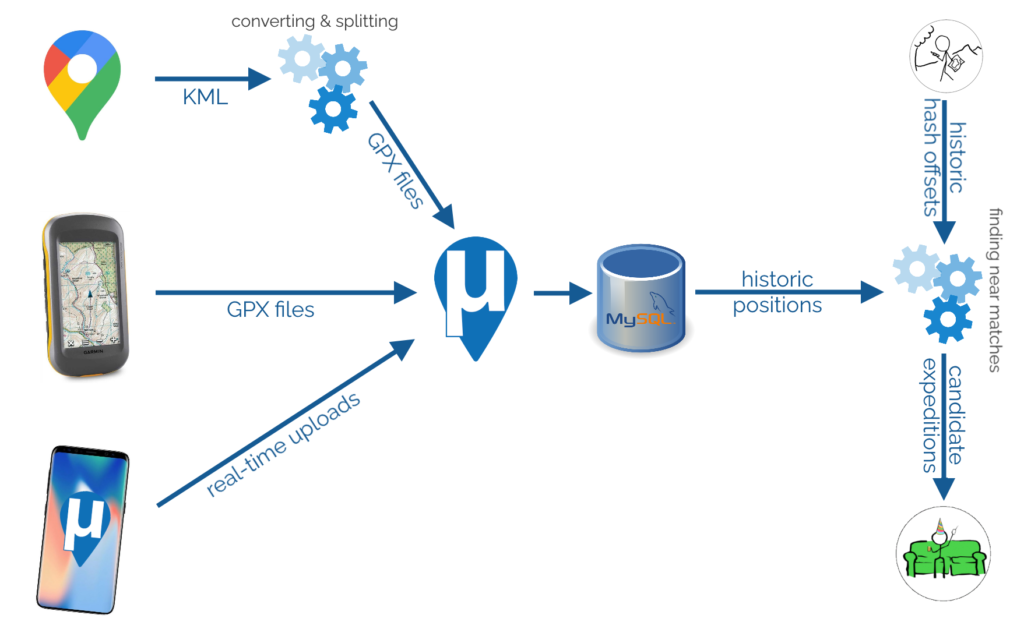
To begin with, I needed to get all of my data into μLogger. The Android app syncs to it automatically and uploading from my GPSr was simple. The data from Google Takeout was a little harder.
I found a setting in Google Takeout to export past location data in KML, rather than JSON, format. KML is understood by GPSBabel which can convert it into GPX. I can “cut up” the resulting GPX file using a little grep-fu (relevant xkcd?) to get month-long files and import them into μLogger. Easy!
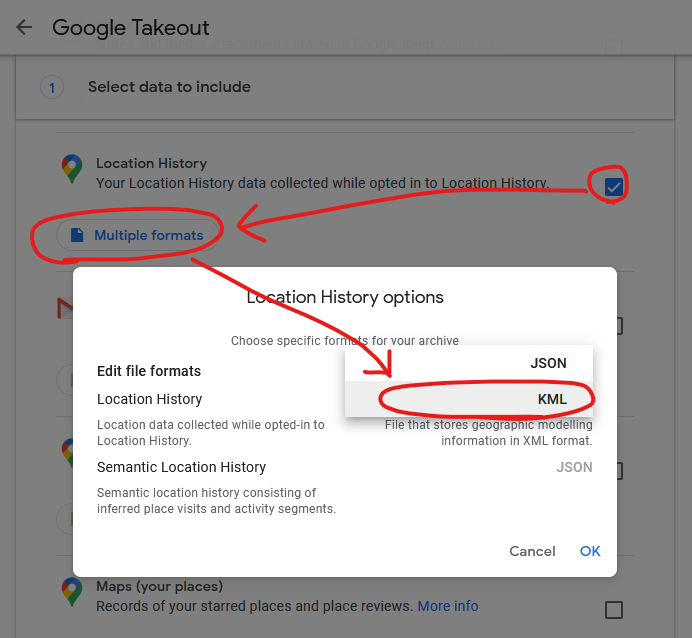
Well.. μLogger’s web interface sometimes times-out if you upload enormous files like a whole month of Google Takeout logs. So instead I wrote a Nokogiri script to convert the GPX into SQL to inject directly into μLogger’s database.
Next, I got a set of hashpoint offsets. I only had personal positional data going back to around 2010, so I didn’t need to accommodate for the pre-2008 absence of the 30W time zone rule. I’ve had only one trip to the Southern hemisphere in that period, and I checked that manually. A little rounding and grouping in SQL gave me each graticule I’d been in on every date. Unsurprisingly, I spend most of my time in the 51 -1 graticule. Adding (or subtracting, for the Western hemisphere) the offset provided the coordinates for each graticule that I visited for the date that I was in that graticule. Nice.
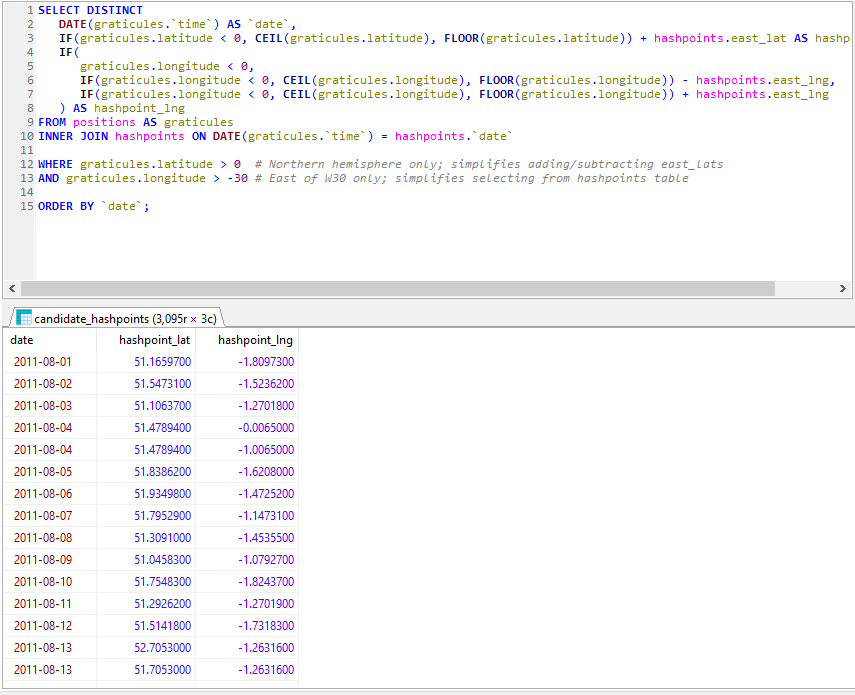
The correct way to find the proximity of my positions to each geohashpoint is, of course, to use WGS84. That’s an easy thing to do if you’re using a database that supports it. My database… doesn’t. So I just used Pythagoras’ theorem to find positions I’d visited that were within 0.15° of a that day’s hashpoint.
Using Pythagoras for geopositional geometry is, of course, wrong. Why? Because the physical length of a “degree” varies dependent on latitude, and – more importantly – a degree of latitude is not the same distance as a degree of longitude. The ratio varies by latitude: only an idealised equatorial graticule would be square!
But for this case, I don’t care: the data’s going to be fuzzy and require some interpretation anyway. Not least because Google’s positioning has the tendency to, for example, spot a passing train’s WiFi and assume I’ve briefly teleported to Euston Station, which is apparently where Google thinks that hotspot “lives”.

I assumed that my algorithm would detect all of my actual geohash finds, and yes: all of these appeared as-expected in my results. This was a good confirmation that my approach worked.
And, crucially: about a dozen additional candidate points showed up in my search. Most of these – listed at the end of this post – were 50m+ away from the hashpoint and involved me driving or cycling past on a nearby road… but one hashpoint stuck out.

In August 2015 we took a trip up to Edinburgh to see a play of Ruth‘s brother Robin‘s. I don’t remember much about the play because I was on keeping-the-toddler-entertained duty and so had to excuse myself pretty early on. After the play we drove South, dropping Tom off at Lanark station.
We exited Lanark via the Hyndford Bridge… which is – according to the map – tantalisingly-close to the 2015-08-22 55 -3 hashpoint: only about 23 metres away!

That doesn’t feel quite close enough to justify retroactively claiming the geohash, tempting though it would be to use it as a vehicle to my easy geohash ribbon. Google doesn’t provide error bars for their exported location data so I can’t draw a circle of uncertainty, but it seems unlikely that I passed through this very close hashpoint.
Pity. But a fun exercise. This was the nearest of my near misses, but plenty more turned up in my search, too:

Last year, I accepted a job offer with Automattic and I’ve been writing about it every 128 days. I’ve talked about my recruitment, induction, and experience of lockdown (which in turn inspired a post about the future of work). I’ve even helped enthuse other new Automatticians! Since my last post I’ve moved house so my home office has changed shape, but I’m still plodding along as always… and fast-approaching my first “Automattic birthday”! (This post ran a little late; the 128-day block was three weeks ago!)
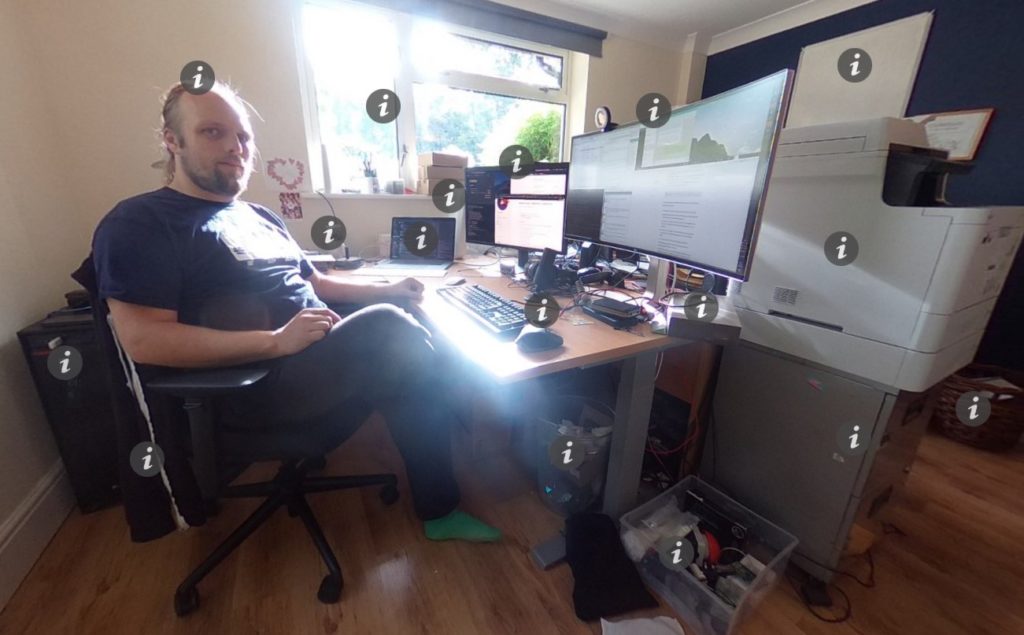
As I approach my first full year as an Automattician, I find myself looking back on everything I’ve learned… but also looking around at all the things I still don’t understand! I’m not learning something new every day any more… but I’m still learning something new most weeks.
This summer I’ve been getting up-close and personal with Gutenberg components. I’d mostly managed to avoid learning the React (eww; JSX, bad documentation, and an elephantine payload…) necessary to hack Gutenberg, but in helping to implement new tools for WooCommerce.com I’ve discovered that it’s… not quite as painful as I’d thought. There are even some bits I quite like. But I don’t expect to fall in love with React any time soon. This autumn I’ve been mostly working on search and personalisation, integrating customer analytics data with our marketplace to help understand what people look for on our sites and using that to guide their future experience (and that of others “like” them). There’s always something new.
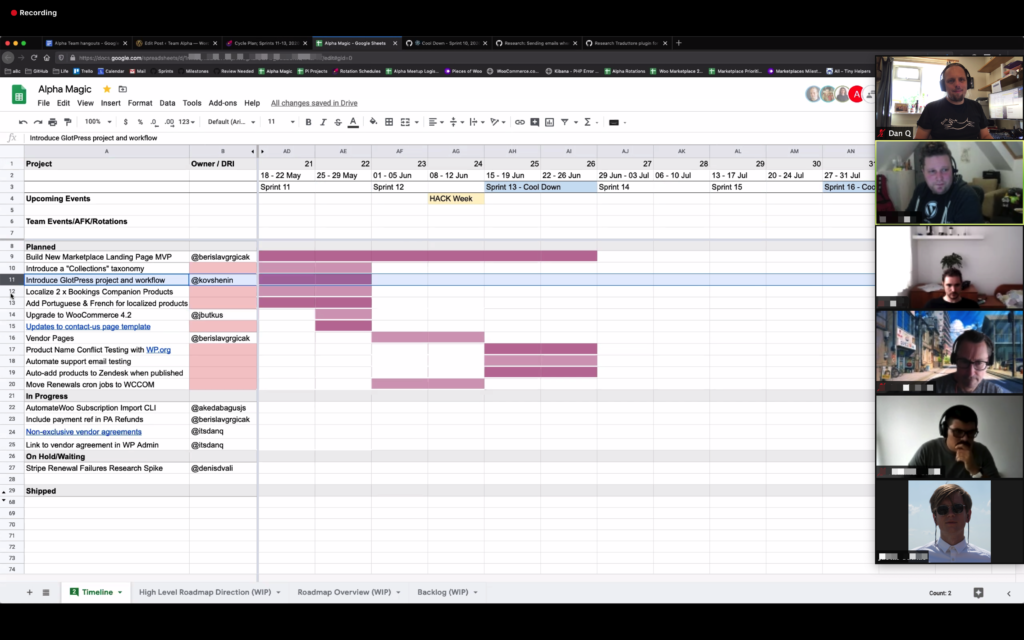
My team continues to grow, with two newmatticians this month and a third starting in January. In fact, my team’s planning to fork into two closely-linked subteams; one with a focus on customers and vendors, the other geared towards infrastructure. It’s exciting to see my role grow and change, but I worry about the risk of gradually pigeon-holing myself into an increasingly narrow specialisation. Which wouldn’t suit me: I like to keep a finger in all the pies. Still; my manager’s reassuring that this isn’t likely to be the case and our plans are going in the “right” direction.
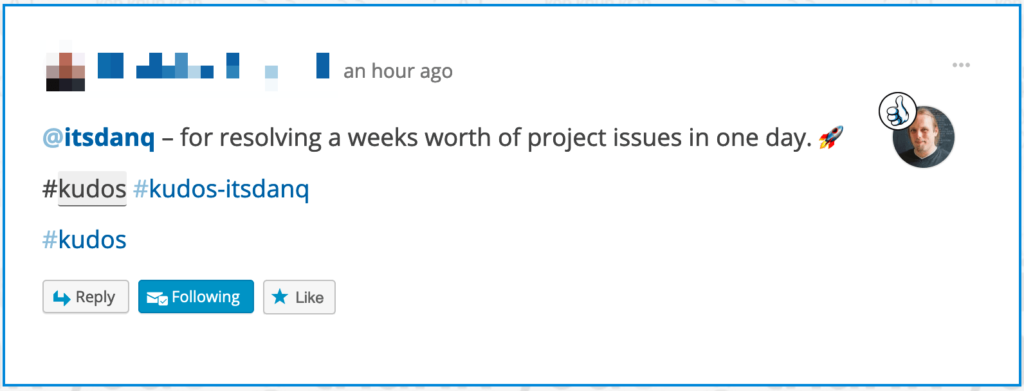
On the side of my various project work, I’ve occasionally found the opportunity for more-creative things. Last month, I did some data-mining over the company’s “kudos” history of the last five years and ran it through vis.js to try to find a new angle on understanding how Automattic’s staff, teams, and divisions interact with one another. It lead to some interesting results: panning through time, for example, you can see the separate island of Tumblr staff who joined us during the acquisition gradually become more-interconnected with the rest of the organisation over the course of the last year.

The biggest disappointment of my time at Automattic so far was that I’ve not managed to go to a GM! The 2019 one – which looked awesome – took place only a couple of weeks before my contract started (despite my best efforts to wrangle my contract dates with the Bodleian and Automattic to try to work around that), but people reassured me that it was okay because I’d make it to the next one. Well.. 2020 makes fools of us all, I guess, because of course there’s no in-person GM this year. Maybe, hopefully, if and when the world goes back to normal I’ll get to spend time in-person with my colleagues once in a while… but for now, we’re having to suffice with Internet-based socialisation only, just like the rest of the world.